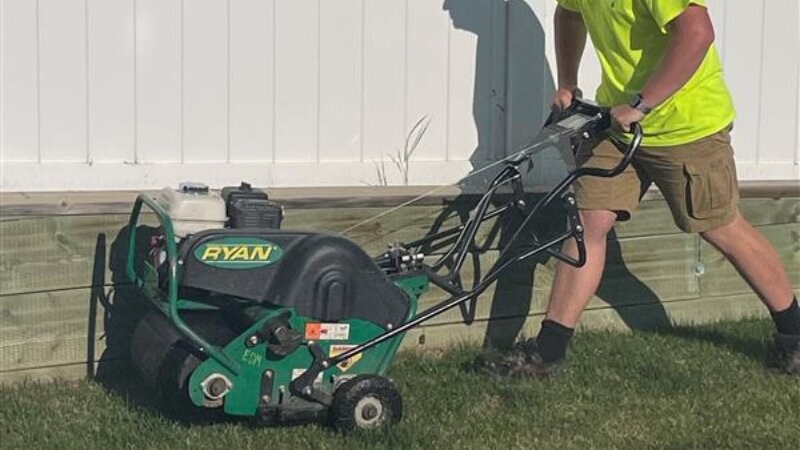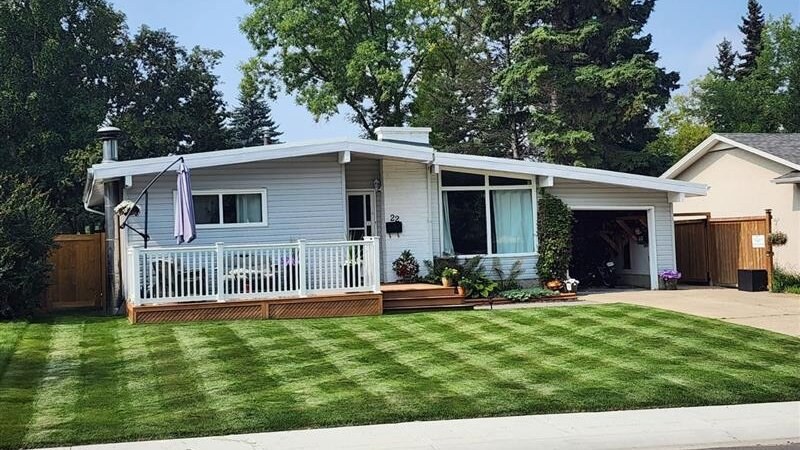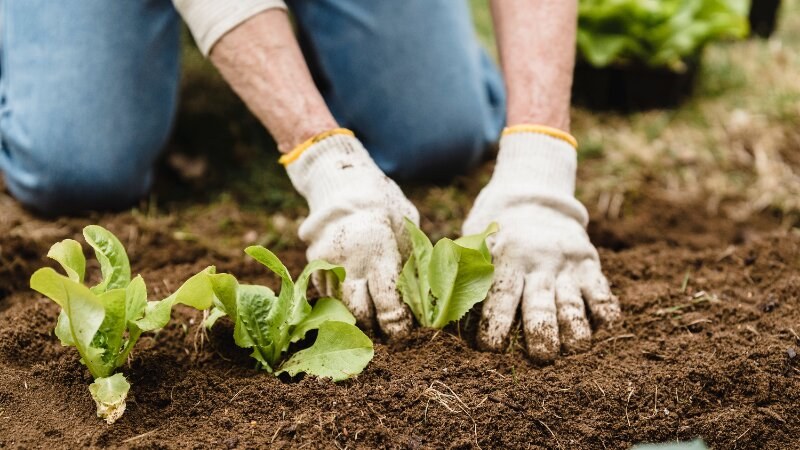9 Aeration and Overseeding Mistakes You’re Probably Making
Reading time: 5 minutesAeration and overseeding are crucial lawn care practices that keep your grass looking great. However, they can also be challenging, even for experienced homeowners who have learned a lawn care trick or two over time.
Most people make a few mistakes at first, but some blunders can be costly. Below, we go over 9 common things to avoid and where you can go to learn more about great lawn care practices.

Top Aeration and Overseeding Mistakes to Avoid
Aeration is the process of loosening compacted soil that may prevent water and nutrients from reaching your lawn's roots, essentially letting it "breathe" again.
Lawn overseeding is often done alongside aeration and involves adding new grass seed to an existing lawn, filling in small holes, introducing new disease-resistant cultivars, and improving the thickness and overall appearance of the grass.
When done correctly, these two methods can help create a beautiful, vibrant lawn that resists drought and disease. If done improperly, you could leave your lawn worse off than when you started.
Here’s what to avoid:
1. Not Using Core Aeration
You can aerate your lawn in several ways, but not all of them are beneficial. Liquid and spike aeration, for example, are only effective in very small areas – and sometimes, not at all.
Spike aeration involves walking across your lawn with spiked shoes meant to poke holes in the grass, similar to core aeration. But since no dirt is removed with shoes like this, this method only compacts your soil more.
Liquid lawn aeration involves applying natural or chemical solutions to the grass to break up hard clay soil. However, these solutions do very little to loosen already compacted dirt, roots, and other organic matter.
2. Aerating During the Wrong Season
Aeration plays a key role when preparing your lawn for spring, but aerating in the summer or very late fall can be too hard on your lawn. Grass needs lots of moisture and a temperate climate to repair itself after aeration.
When you take this step in the dry, hot summer, you put your lawn under even more stress, while the harsh outdoor conditions are already a potential problem. And in Western Canada’s cold winters, working with frozen-hard soil is next to impossible.
For best results, aerate your lawn in the spring—April or May—when the ground is easier to work with, and rain is likely to be in the forecast. You can also aerate your lawn in the fall just before temperatures start dropping. Just make sure your grass has a couple of weeks before the first freeze of the season to recover.
3. Misusing Lawn Aeration Equipment
Core aeration generally involves using special lawn equipment, which can be difficult to operate if you’re not experienced.
Common mistakes homeowners make when using an aerator include losing control of the machine, having difficulty creating uniform holes, and damaging underground sprinkler heads, cables or electrical wires. Not only does this put the equipment operator and anyone around them at risk, but it could potentially cause problems for the entire neighbourhood if a critical line is cut.

4. Aerating Your Soil When It’s Too Dry
You should always aerate your lawn when it's lightly moist and not too wet or dry. Even with powerful equipment, dry, compacted soil is difficult to dig into. Be sure to water your lawn well before planning to aerate. Then, wait a day or two for the soil to drain before bringing out the aerator.
5. Mowing Too Soon After You Overseed
New grass needs time to establish itself and grow properly. Mowing during this window might make your lawn look tidier, but it stresses out your lawn at a very important time.
Wait to mow your lawn for 2 to 4 weeks after you aerate and overseed your lawn, depending on what type of grass you have. Ryegrass and tall fescue have shorter germination and rooting times than Kentucky bluegrass, so you may want to check with a lawn care professional before you break out the mower.
If you need to mow your lawn during germination time, always make sure you mulch, and do not bag your clippings to keep the grass seed in place.
6. Using Weed Killers or Lawn Fertilizer on New Grass
After overseeding your lawn, you may start to notice weeds growing along with your new grass. It may be tempting to use synthetic herbicides at this stage to prevent weeds from taking over your lawn, but this can cause more problems than it solves.
This also goes for lawn fertilizers. New grass usually doesn’t need any help growing, and harsh chemicals that ordinarily suit established grass can burn baby blades and make it difficult for them to develop a strong root system. Professionals will always apply the appropriate products where and when needed to avoid any adverse effects to newly seeded areas.
7. Not Watering Enough After Overseeding
A common mistake homeowners make when overseeding their lawn is failing to keep the soil moist enough for the grass to root. Unless there's a severe weather event on the horizon, your grass is unlikely to get enough moisture just from rain alone. You'll need to water your lawn daily until the new grass has gained enough height to be mowed.
8. Planting the Wrong Kind of Grass Seed
Another typical misstep homeowners make when overseeding is choosing the wrong type of grass seed for their lawn. Make sure you're using a type of grass well-suited to the cold climate and the sun and shade your lawn gets. Also, account for important factors like foot traffic and disease tolerance.

9. Not Planting Enough Seed
Inadequate seeding can also be a problem, and dispersing too few seeds across your grass will result in uneven growth and even more patchiness than before. A good rule of thumb is to divide the amount of seed you have in half. Then, spread one-half of your seed across your entire lawn going in one direction and the other going in the other direction.
Redefining the Landscape of Lawn Care with Aeration and Overseeding Services
At Green Drop, lawn care is our specialty. Our GreenKeepers are experts in services like lawn aeration and overseeding. Give your yard the TLC it deserves. Book your services online and learn more about the best lawn care practices and what you can do to keep your grass healthy and vibrant in every season.
Whether you’re in Calgary, Edmonton, Red Deer, Regina, Saskatoon, or Winnipeg, we’ve got you covered!

